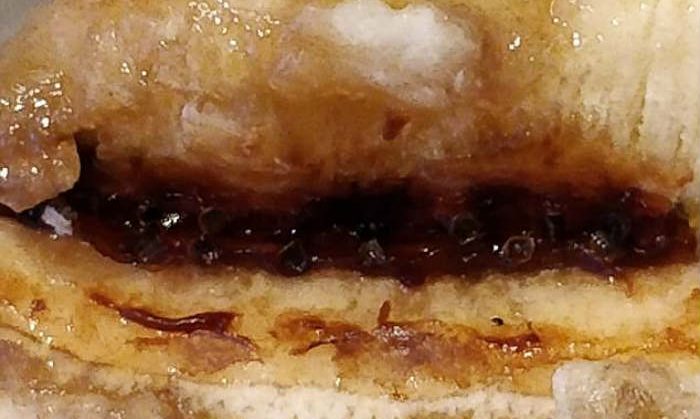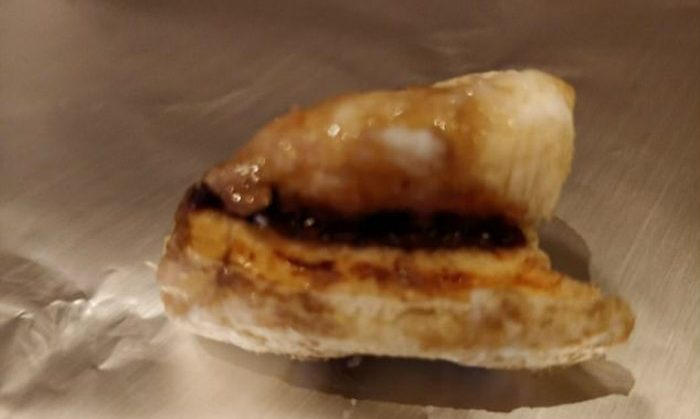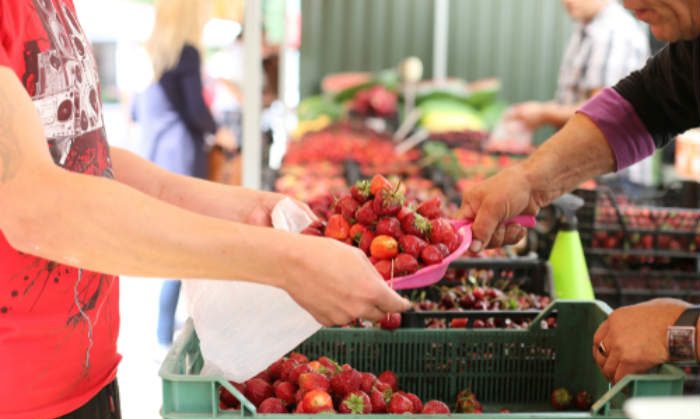What would need to happen for you to vow never to eat a certain food, even if it was your favorite? For 38-year-old mother-of-six Lorraine Wall, it would take biting into a spider egg-infested banana, swallowing the mouthful, and then looking in horror at the remaining spider eggs lurking inside the banana – which is exactly what she did.
Loraine Wall’s Stomach-Churning Banana Experience
The mother from Liverpool, England was just getting a snack for her and her 5-month-old daughter. Bananas from her local supermarket, Lidl. Lorraine already lives with a fear of spiders so, before biting into it, she broken off both ends.[1]
“I felt it crunching and crunching, and then I swallowed. At first, I thought it was just not very ripe but then I looked and it was full of brown goo and what looked like spider eggs… It’s embarrassing but I was sick everywhere, it was disgusting, it turned my stomach.”[2]
Although she can joke about it now, Lorraine believes whatever was in that banana was spider eggs and admits she keeps “having visions of [the spider eggs] hatching out inside [her].”
How Did Lorraine Wall Handle the Disgusting Ordeal?

In the moment, she panicked and called local police.
“They sent a paramedic because I could be toxic in my system,” said Lorraine. “I had low blood pressure because of a heart condition and they wanted to admit me to the hospital but I said, ‘I can’t, I’ve got six kids here.’
They called a doctor and he said he’d check medical books and then told me that my stomach acid would kiss ‘most’ of the eggs – that is not what I wanted to hear.”[2]
Left with the instruction to simply wait it out, she wrapped up the half-eaten banana and brought it back to the store. Funnily enough, Lidl employees offered her a new bunch of bananas but Lorraine politely declined.
Not only will she “never go near one again,” she even banned bananas from her household!

“There’s no way I’m having another banana in this house. I can’t even look at them. I can’t face it… I had another banana set to one side for my [5-month-old daughter] and she’s just started with some mashed banana in her porridge. I don’t want to think about what would happen if I’d have given it to her.”[2]
A Lidl Spokesperson’s Official Response
“We were very sorry to hear of this matter, as it is never our intention for a customer to be dissatisfied in any way.
We work very closely with our suppliers, both in the UK and abroad to ensure that the fresh fruit and vegetables available in our stores are of the highest possible quality for our customers.
Whilst it is evident that this was not a spider’s nest, we were nevertheless disappointed that our expected high standards were not met on this occasion.
The matter was immediately escalated to our Quality Assurance department, who are investigating with the supplier and will continue to keep the customer updated.”[3]
To date, Lidl claims that what was inside the banana was not spider eggs and have yet to confirm what it was, but Lorraine Wall’s mind has long been made up. So, we’ll have to wait and see.
Understanding Food Imports in the U.S.
According to a law under the U.S. Federal Food, Drug, and Cosmetic Act, “importers of food products intended for introduction into U.S. interstate commerce are responsible for ensuring that the products are safe, sanitary, and labeled according to U.S. requirements.”[4] This includes all imported foods.
Importers don’t even require permission from the Food and Drug Administration (FDA) to import foods, so long as the facilities that produce, store, or handle products are registered with the FDA.
However, once they arrive at U.S. ports of entry, all food imports are subject to FDA inspection before they are sold to consumers. If food imports fail to pass inspection, the FDA has the right to detain or block shipments.
Getting Your Food Shouldn’t Be So Complicated

It’s true that imported foods enable us to eat uncommon foods and out-of-season produce. However, before the food even reaches your kitchen, it’s been in transit for long periods of time and kept “fresh” with the help of toxic sprays.
In reality, if you have the option available to you, eating locally grown food is the best way to go. Just check out those perks:[5]
- Locally grown food is full of flavor and often free of chemicals
- You get to eat the freshest of the fresh, instead of food that’s traveled thousands of miles
- Eating local foods means less time to lose their nutritional value
- You’re eating from a safer food supply, not one riddled with chances of contamination
- Growers can share exactly how they grow their food (and you can often see it yourself)
- Buying local food helps support and stimulate the local economy, which improves your health
- Reduce your carbon footprint and benefit the immediate local environment (e.g., green spaces)
The Fastest and Easiest Way to Start Eating More ‘Local’
Most people think it’s hard eat locally, but the reasons below are proof that it’s actually easier than you thought![6]
- Buy what you can at a local farmer’s market (especially produce)
- As mentioned above, start eating seasonal food (it may be limiting, but it’s delicious!)
- Join a Community-Supported Agriculture (CSA) which, for a flat weekly rate, provides you with a box of fresh, local, seasonal produce
- If you want stuff like strawberries in the winter, consider freezing seasonal foods for out-of-season enjoyment
- Grow your own food at home, indoors or outdoors
See for yourself!
Our readers love these articles about growing their own produce all year long with minimal effort…
- How to Grow an Unlimited Number of Blueberries in Your Backyard
- 12 Photos That Prove We Have No Idea How Food Grows


